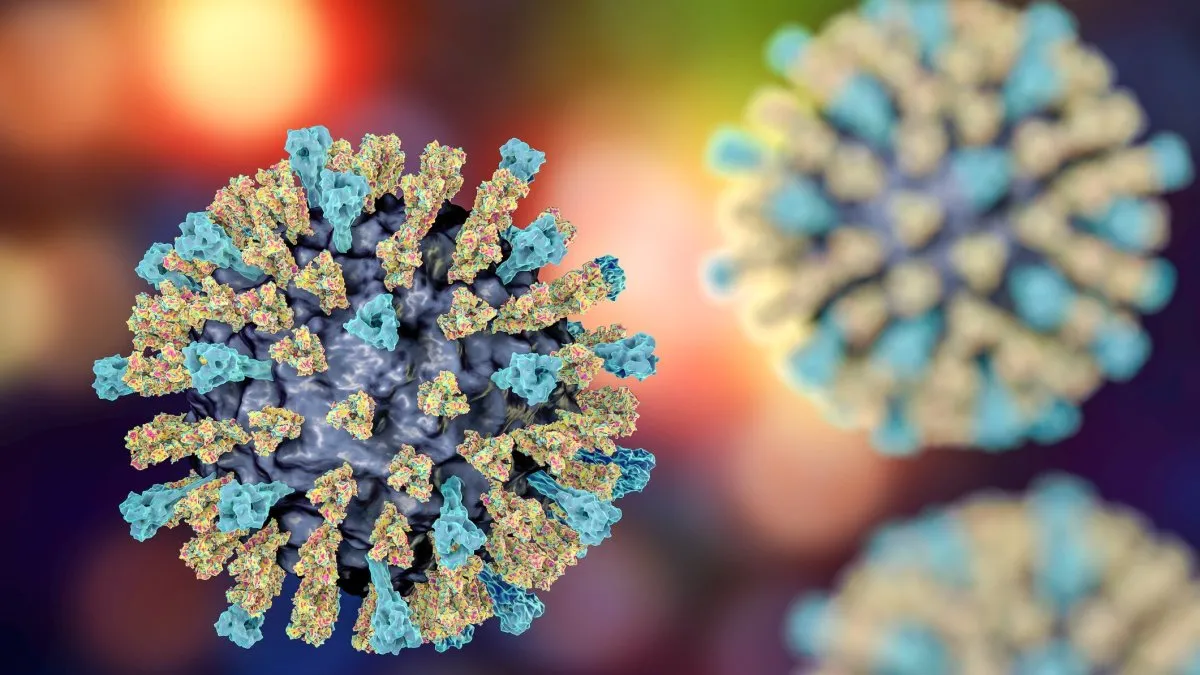
As of Friday, the United States has reported a staggering total of 800 measles cases across the nation, with two additional states confirming outbreaks this week. The state of Texas is significantly contributing to these high numbers, particularly with an outbreak in West Texas that commenced nearly three months ago and has escalated to 597 cases. Tragically, two unvaccinated elementary school-aged children have died from measles-related illnesses near the outbreak's epicenter in Texas, alongside an adult in New Mexico who also succumbed to a measles-related illness.
Other states currently experiencing active outbreaks—defined as having three or more cases—include Indiana, Kansas, Michigan, Oklahoma, Ohio, Pennsylvania, and New Mexico. Notably, the U.S. has recorded more than double the number of measles cases compared to the entirety of 2024. The measles virus is highly contagious, transmitted through the air, and can easily spread when an infected person breathes, sneezes, or coughs. Despite being preventable through vaccination, measles had been considered eliminated in the U.S. since 2000. Health experts are increasingly concerned that the virus may establish itself in other communities with low vaccination rates, potentially prolonging the outbreak for up to a year.
In Texas, state health officials announced 36 new cases of measles since Tuesday, bringing the statewide total to 597 across 25 counties, predominantly in West Texas. The outbreak has resulted in 62 hospitalizations to date. Most cases are centered in Gaines County, where a close-knit, undervaccinated Mennonite community has logged 371 cases—over 1% of the county’s population of 22,892. Among the fatalities, an 8-year-old child died on April 3, reportedly due to 'measles pulmonary failure,' according to Health Secretary Robert F. Kennedy Jr.. Additionally, New Mexico has reported five new cases this week, escalating its total to 63, with genetic testing confirming a link to the Texas outbreak.
Kansas has reported 37 cases across eight counties in the southwest region. The most significant number of cases is in Haskell County, which has reported eight cases. Health officials confirmed that the first reported case in Stevens County on March 13 is linked to the ongoing outbreaks in Texas and New Mexico.
In Oklahoma, the total number of measles cases remains at 12, with nine confirmed and three probable cases. Initial reports suggest that these cases are associated with the West Texas and New Mexico outbreaks, although specific counties with cases have not been disclosed.
The Ohio Department of Health confirmed 30 measles cases as of Thursday, with outbreaks primarily in Ashtabula and Knox Counties. The outbreak in Ashtabula County was traced back to an unvaccinated adult who had traveled internationally.
In Indiana, six cases have been confirmed in Allen County, where four are unvaccinated minors and two are adults whose vaccination status remains unknown. These cases have no known connections to other outbreaks.
In Pennsylvania, Erie County health officials declared an outbreak after identifying two new cases linked to a previously confirmed case from March 30. The state has reported a total of nine cases this year, including international travel-related cases.
Montcalm County in Michigan has reported three linked measles cases, which are tied to a significant outbreak in Ontario, Canada. As of Thursday, Michigan has confirmed seven overall cases.
In total, there have been 800 measles cases reported in the U.S. as of Friday, according to the Centers for Disease Control and Prevention (CDC). Clusters of measles cases have been identified in various states, including Alaska, California, Florida, and New Jersey. Many outbreaks can be traced back to individuals who contracted the disease while traveling abroad. Notably, in 2019, the U.S. experienced 1,274 cases, nearly jeopardizing its status as measles-free.
The most effective way to prevent measles is through the MMR vaccine, which protects against measles, mumps, and rubella. The CDC recommends that children receive their first dose between 12 and 15 months of age and a second dose between 4 and 6 years old. Individuals with documentation of receiving a live measles vaccine prior to the 1960s do not require revaccination, but those immunized with an ineffective vaccine prior to 1968 should receive at least one dose of the current vaccine. Communities with high vaccination rates—above 95%—can achieve herd immunity, making it more difficult for diseases like measles to spread.
Measles typically begins by infecting the respiratory tract, leading to symptoms such as high fever, runny nose, cough, red, watery eyes, and a characteristic rash. The rash usually appears three to five days after the onset of initial symptoms and can escalate to a fever exceeding 104 degrees Fahrenheit. While most children recover, measles can lead to severe complications such as pneumonia, blindness, and even death.
There is no specific treatment for measles; medical professionals generally focus on alleviating symptoms, preventing complications, and providing comfort to the patient. Ongoing monitoring and supportive care are critical during the illness.
This report was compiled with contributions from AP Science Writer Laura Ungar and is supported by the Howard Hughes Medical Institute’s Science and Educational Media Group and the Robert Wood Johnson Foundation. The Associated Press is solely responsible for the content presented.